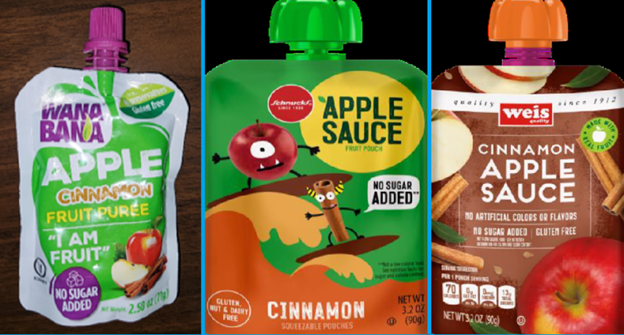Tom Neltner, Senior Director, Safer Chemicals
What Happened: FDA recently released draft action levels for lead in foods intended for babies and young toddlers.1 Action levels represent the point above which FDA is likely to regard food as adulterated – essentially unsafe – and seek a recall. This is a key step in implementing FDA’s Closer to Zero Action Plan.
- Lead limits would be 10 parts per billion (ppb) for most foods.
- Limits would be 20 ppb for dry infant cereals and single-ingredient root vegetable products, because these products may have greater lead contamination levels. (Root vegetables are primarily carrots and sweet potatoes.)
The new action levels do not apply to juices; FDA proposed limits on those in April 2022.
Why It Matters: There is no safe level of lead in the diet.
For young children living in homes without lead pipes or lead paint, diet is the primary source of their lead exposure. FDA makes clear in the proposal that:
“Even low lead exposure can harm children’s health and development, specifically the brain and nervous system. Neurological effects of lead exposure during early childhood include learning disabilities, behavior difficulties, and lowered IQ. Lead exposures also may be associated with immunological, cardiovascular, renal, and reproductive and/or developmental effects. Because lead can accumulate in the body, even low-level chronic exposure can be hazardous over time.”
Lead can enter the food chain through multiple sources, including crops grown in contaminated soil and/or irrigated with contaminated water, atmospheric deposition from industrial activities, and old food-processing equipment that contains lead. The objective is to get exposure closer to zero.
Our Take: We applaud FDA’s proposed limits, which are more protective than the European Union’s 2021 standards. BUT…on the flip side:
- FDA failed to set action levels for popular grain-based snacks, like teething biscuits and snack puffs. The agency needs to rectify this failure with all deliberate speed.
- More protective action levels are achievable, especially for non-rice cereals and for foods that don’t contain rice or root vegetables.
- Proposed action levels do not apply to multiple categories of foods, including:
- FDA’s justification for the draft action levels lacks transparency—undermining both credibility of the levels and the likelihood industry will comply with them.
In addition, USDA and industry need to expand their support for research on the methods for growing, harvesting, and processing root vegetables, rice, and quinoa to further reduce lead contamination in these important foods. Research should include both store-bought and homemade baby foods.
Go Deeper: Visit our new Deep Dives blog to see our 3-part series, which provides a more detailed analysis of FDA’s proposal—including our recommendations for setting more protective limits and improving the transparency and credibility of the agency’s process of setting action levels.
NOTES
1 FDA’s guidance refers to babies and young children. Younger than two is a very narrow definition of young children, especially since children up to age six are particularly vulnerable to the harm that lead causes to their brains. Other federal agencies set standards for this broader age range. Toddlers are generally considered to be between 1 and 3 years of age. Therefore, we use the term “young toddlers” to avoid confusion.
Revised on March 21 to correct quote.












